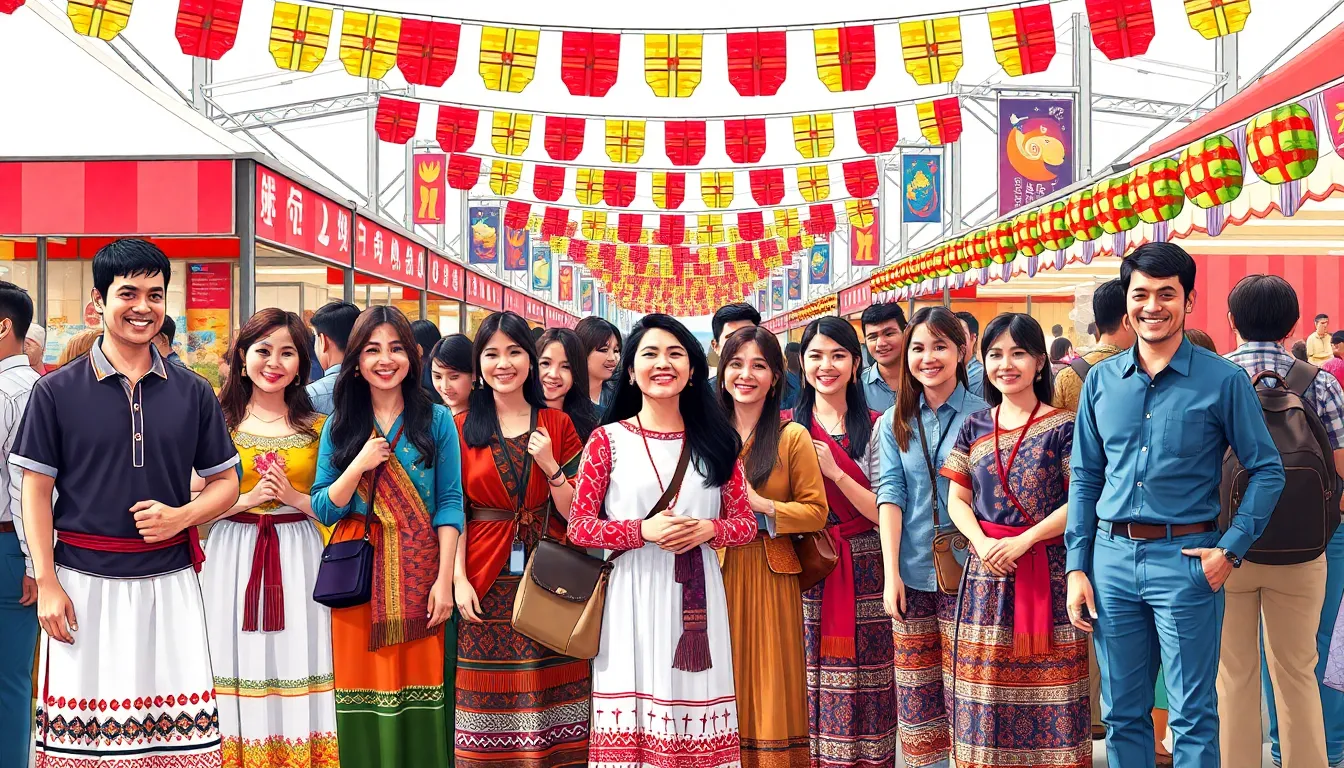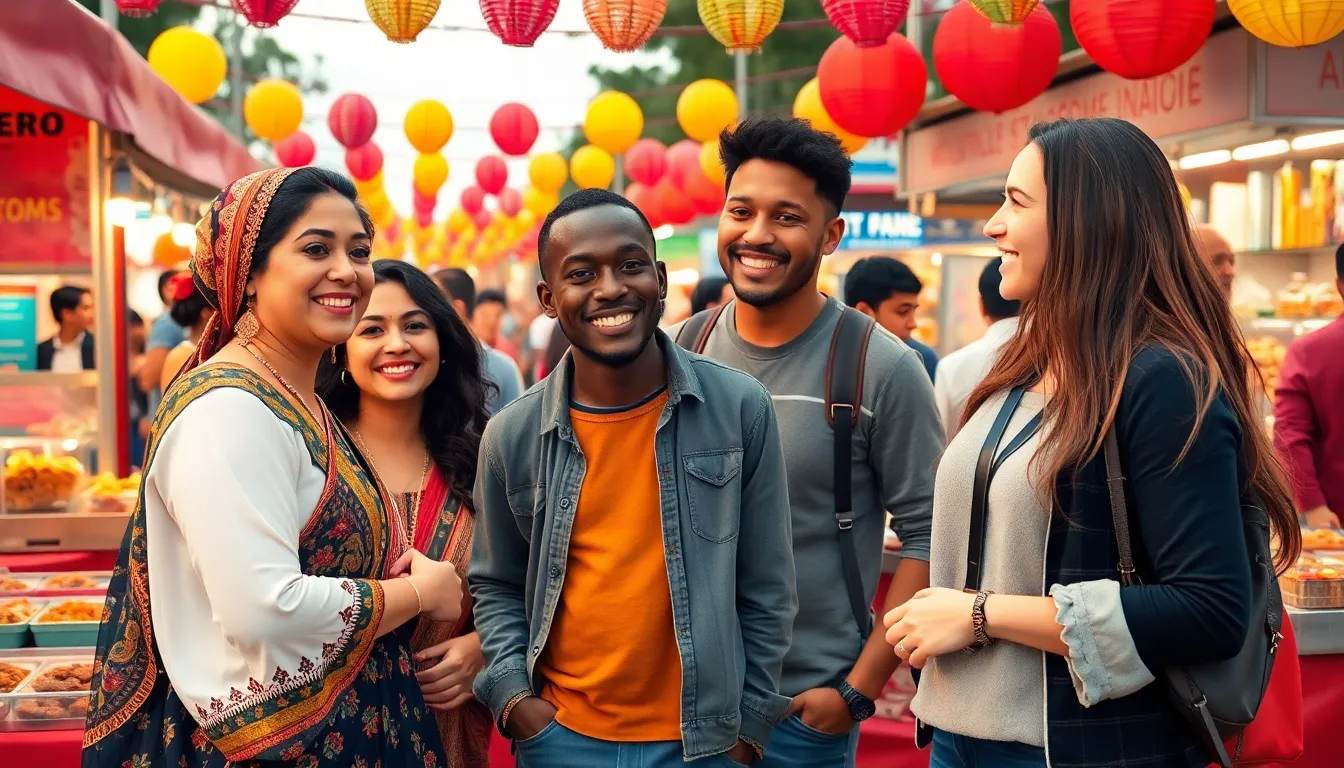Culture is like a giant buffet where everyone gets to pick their favorite dishes. It’s the vibrant tapestry woven from traditions, languages, and customs that shape our daily lives. From the way people celebrate holidays to the unique quirks that make each community special, culture is the spice that adds flavor to humanity’s story.
Table of Contents
ToggleWhat Is Culture?
Culture serves as a collective identity, shaping individuals and communities through shared experiences. It consists of diverse traditions, languages, and customs that play a significant role in daily life.
Definition of Culture
Culture defines the characteristics and knowledge of a particular group. It includes values, beliefs, and practices that are common among its members. Cultural identity emerges through language, rituals, and social norms that communities maintain over time. This identity influences how people perceive their world and guides social interactions.
Key Elements of Culture
Key elements of culture include language, religion, cuisine, social habits, and arts. Language serves as a primary means of communication, establishing connections within the community. Religion often plays a pivotal role in shaping moral values and traditions. Cuisine reflects a community’s agricultural practices and historical influences. Social habits encompass daily behaviors and customs that bind people, while arts express emotions and creativity, highlighting cultural diversity.
Ways to Describe Culture

Culture manifests in various dimensions, each offering a unique perspective on human experiences. Key elements such as language and traditions play a vital role in understanding cultural contexts.
Language and Communication
Language serves as a primary vehicle for expressing thoughts and emotions within communities. Different languages showcase the diversity of cultural expressions. For instance, idiomatic phrases often capture unique cultural nuances. Nonverbal communication, including gestures and body language, complements spoken language, enriching interactions. Furthermore, regional dialects highlight cultural specificity, revealing local identity. In many cultures, language shapes social structures, underscoring the significance of effective communication in community dynamics.
Traditions and Customs
Traditions encompass the rituals and practices that define a culture’s identity. Families often celebrate significant events with unique customs. For example, weddings may reflect particular cultural values through attire and ceremonies. Festivals also exemplify cultural richness, showcasing local art, music, and cuisine. Additionally, traditional practices such as storytelling foster a sense of belonging and continuity. Observing customs can deepen understanding of a culture’s history and belief systems. Ultimately, traditions and customs create shared experiences that bond communities and preserve cultural heritage.
The Impact of Culture on Society
Culture significantly influences societal frameworks, shaping the way individuals interact and perceive the world. It establishes norms and values that govern behavior and inform collective identity.
Social Norms and Values
Social norms dictate acceptable behaviors within a community. These unwritten rules guide interactions and help maintain order, ensuring harmony among individuals. Values deeply rooted in cultural traditions further shape attitudes towards various issues, such as family, education, and morality. Respect for elders often prevails in many cultures, while others emphasize individualism. Diverse customs determine how people celebrate life milestones, handle conflicts, and express emotions, underscoring the importance of shared beliefs in fostering societal cohesion.
Cultural Identity and Diversity
Cultural identity plays a vital role in shaping community dynamics. It fosters a sense of belonging and pride among individuals connected through shared traditions and languages. Communities rich in cultural diversity contribute to a vibrant social fabric, enhancing creativity and innovation. Unique cultural expressions, such as art, music, and cuisine, reflect varying histories and experiences, enriching society as a whole. Diversity encourages mutual respect and understanding, transforming societies into thriving environments for collaboration and growth.
Tools for Describing Culture
Various tools exist for describing culture effectively, providing insights into diverse human experiences.
Ethnography and Participant Observation
Ethnography serves as a primary method for exploring cultural dynamics. This approach involves immersive engagement within a community, allowing researchers to gather firsthand information. Observing daily life, traditions, and social interactions contributes to a deeper understanding of cultural nuances. Participants in the research often share their perspectives, enriching the findings. Cultural contexts emerge through long-term interactions, showcasing daily practices, rituals, and belief systems. Ethnographers analyze behaviors, enabling them to capture the essence of individual and collective experiences.
Interviews and Surveys
Interviews and surveys present alternative methods for gathering cultural data. These structured or semi-structured formats capture a wide range of voices and opinions. Direct conversations allow individuals to express unique insights about their cultural backgrounds. Surveys provide quantitative data, revealing patterns and trends within larger groups. Both methods help identify shared values, beliefs, and practices, enhancing the understanding of cultural identities. Researchers can gather diverse viewpoints, ensuring comprehensive and balanced representation of cultural perspectives.
Culture is a vibrant tapestry that weaves together the threads of human experience. It shapes identities and fosters connections among individuals and communities. By understanding the nuances of culture, one can appreciate the rich diversity that exists in the world.
The tools for describing culture provide valuable insights into the lives and practices of different groups. Ethnography and participant observation enable a deeper engagement with cultural dynamics. Meanwhile, interviews and surveys capture the voices of individuals, enriching the understanding of shared values and beliefs.
Ultimately, embracing cultural diversity not only enhances creativity and innovation but also cultivates mutual respect and understanding. This appreciation for varied cultural expressions is essential for building harmonious and thriving societies.




